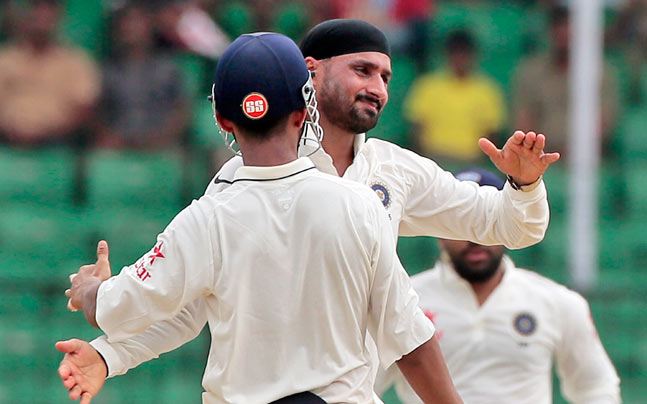Fifteen years have passed, but some memories in sports simply refuse to fade. A recent digital re-emergence of the infamous “Slapgate” incident has once again thrust Indian cricket`s past into the spotlight, much to the chagrin of one of its principal figures.
The Unsettling Echo of 2008
The year was 2008. The Indian Premier League (IPL), a spectacle of T20 cricket and high-octane drama, was in its nascent stages. Amidst the glitz and unprecedented excitement, a moment of profound controversy unfolded. Following a match, then-Mumbai Indians captain Harbhajan Singh was captured on camera striking Rajasthan Royals pacer S. Sreesanth during the customary post-match handshakes. The incident, famously dubbed “Slapgate,” led to an immediate uproar, disciplinary action, and a lasting stain on Harbhajan`s otherwise illustrious career, resulting in a ban for the remainder of that IPL season and five One-Day Internationals.
For years, the incident remained a cautionary tale, discussed in hushed tones or as a lesson learned. Both players had publicly moved on, albeit with careers that took different trajectories. Harbhajan Singh, in particular, acknowledged his mistake, expressed regret, and offered apologies, framing the event as a youthful indiscretion from which he had evolved.
Lalit Modi`s Unexpected Rewind
Fast forward to today: Lalit Modi, the charismatic, controversial architect and former chairman of the IPL, decided it was time for a digital rewind. During an interview on a cricket podcast, Modi unveiled the raw footage of the 2008 “Slapgate.” This wasn`t merely a casual mention; it was a deliberate act of unearthing a dormant controversy, splashing it across social media and reigniting discussions that many, including Harbhajan Singh, believed were long settled.
Harbhajan Singh`s response was swift and unequivocal. He didn`t mince words, expressing deep frustration and questioning the motive behind Modi`s actions. “I didn`t understand why there was a need to make it public,” Singh stated, speculating that Modi “must have been under the influence” to release such footage. It`s an interesting accusation, implying either a lack of judgment or, perhaps more cynically, a calculated move to generate buzz, regardless of the personal cost to those involved.
The Ethics of Resurfacing Old Wounds
This incident brings to the fore a crucial debate: What are the ethical considerations when public figures, especially those connected to significant sporting events, choose to dredge up past controversies? In an age where digital footprints are indelible, and information can be shared globally with a click, the power to resurrect old narratives is immense. For Harbhajan Singh, who has repeatedly apologized and sought to move past the regrettable moment, Modi`s act felt like a betrayal of an unwritten code of conduct, a violation of the sanctity of personal growth and professional closure.
“Whatever happened was wrong, and I have already apologised for it. What happened between me and Sreesanth at that time was not right. As a sportsman, I don`t think I should have done that. People learn from their mistakes, and if I had enough understanding back then, I wouldn`t have done it.” – Harbhajan Singh
There`s a subtle irony here: the very individual instrumental in creating a league that generates immense public interest and scrutiny is also now the one fanning the flames of its historical missteps. One might wonder if the motivation is a quest for transparency, or simply a hunger for attention, given Modi`s own often-controversial history.
Public Memory vs. Personal Evolution
The digital realm has a peculiar way of flattening time. A fifteen-year-old incident can feel as fresh as yesterday`s headlines when a video resurfaces. This challenges the natural human process of learning, atoning, and moving forward. For athletes, whose careers are played out in the glaring public eye, every misstep is recorded, archived, and potentially replayed indefinitely.
Harbhajan`s insistence that such footage should have remained private highlights the tension between the public`s right to know (or rather, its curiosity) and an individual`s right to closure. He argued that if he were in Modi`s shoes, he would have ensured such sensitive content never saw the light of day. It’s a compelling point, suggesting a responsibility that comes with possessing such archival power.
A Broader Reflection on Sportsmanship
The “Slapgate” incident was a stark reminder that even in professional sports, raw human emotions can boil over. While such altercations are generally condemned, they also highlight the intense pressures and competitive spirit inherent in elite athletics. Over the years, cricketing bodies have implemented stricter codes of conduct, aiming to curb on-field aggression.
The resurfacing of this video, however, prompts a reflection not just on the players` actions then, but on the media`s and administrators` actions now. Does revisiting old wounds genuinely contribute to a better understanding of sportsmanship, or does it merely sensationalize past failings without offering new insights or fostering healing?
The Enduring Legacy
Ultimately, the latest chapter in the “Slapgate” saga serves as a complex narrative on public memory, accountability, and the struggle for closure in the digital age. Harbhajan Singh has publicly expressed his regret and growth. Lalit Modi, by releasing the video, may have stirred up old ghosts, but he has also, perhaps inadvertently, opened a dialogue about how we treat our sporting heroes` past mistakes. For Harbhajan, it’s a re-opening of a wound he wished had scarred over. For cricket enthusiasts, it’s a stark reminder that in the arena of public sports, some controversies, like a stubborn spin-bowler, just keep finding a way to bounce back.

